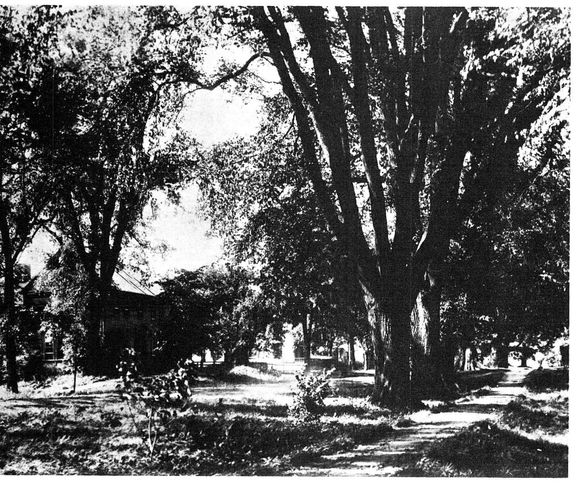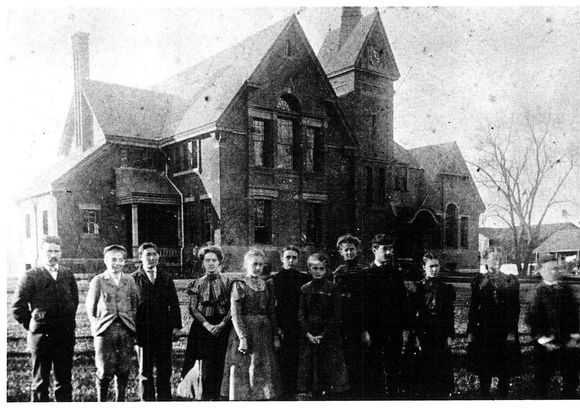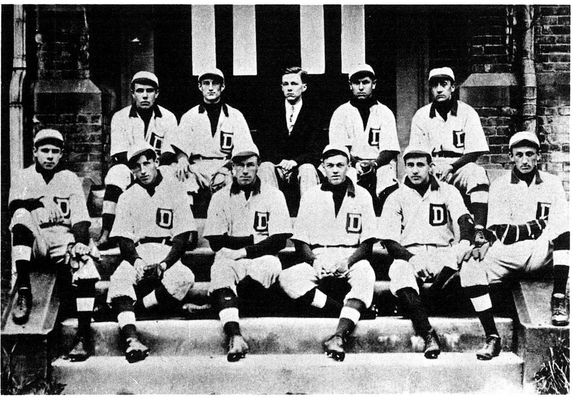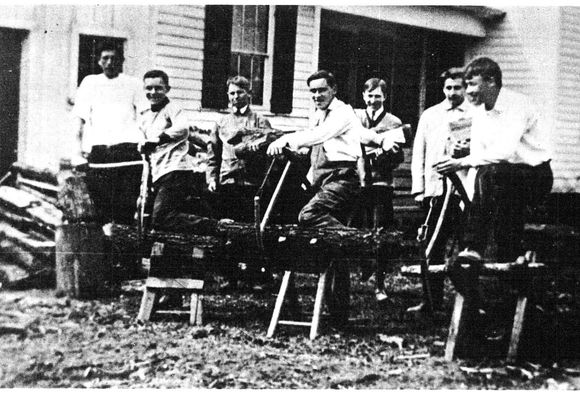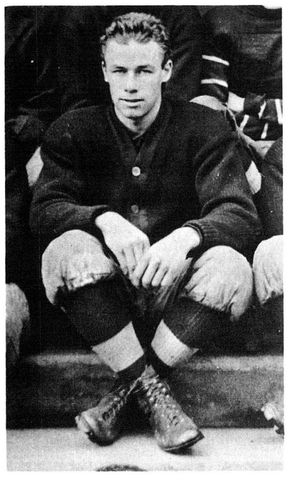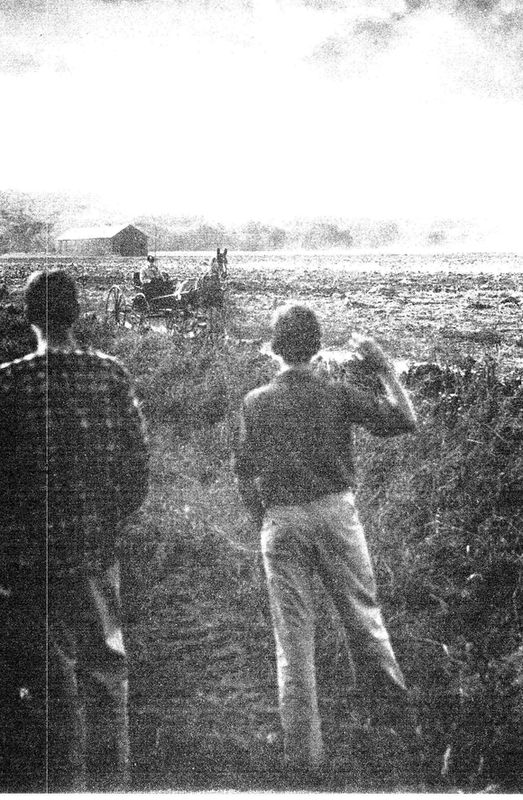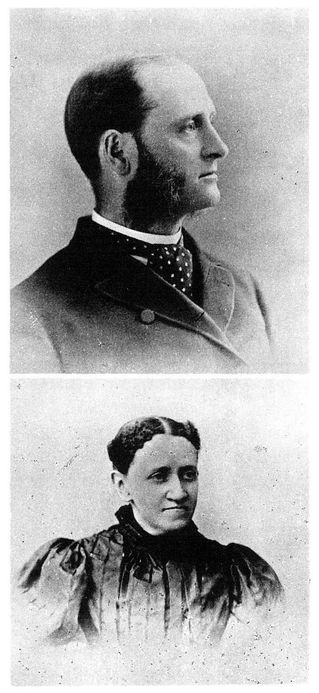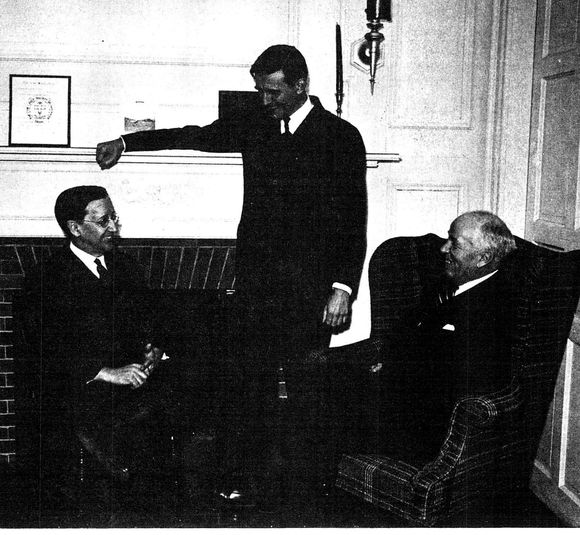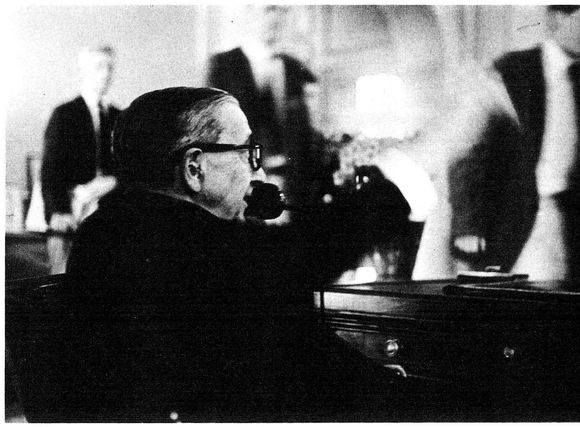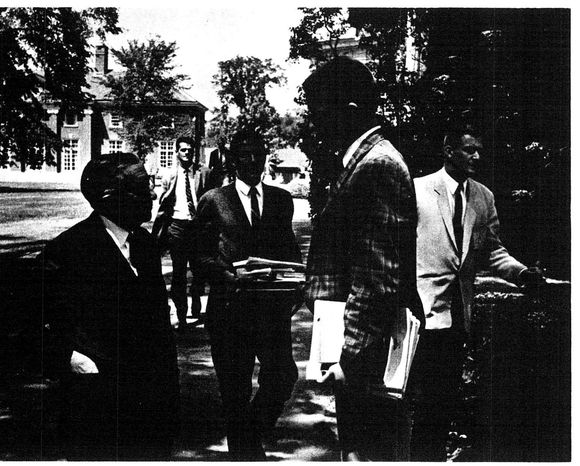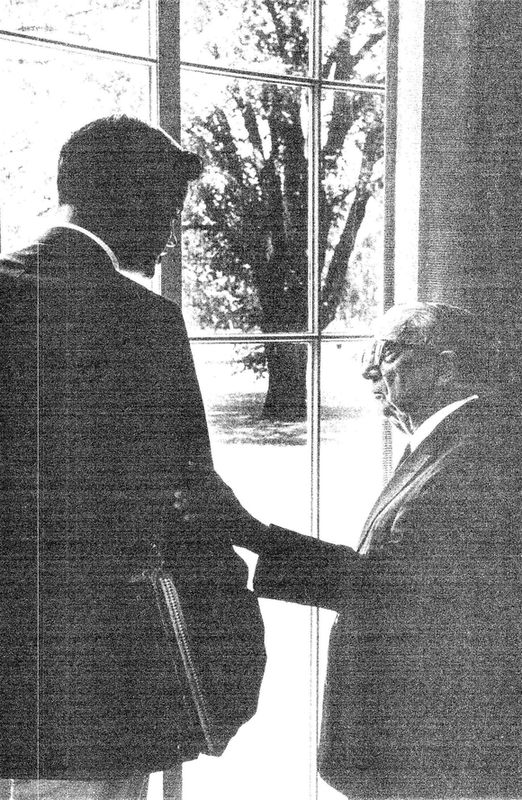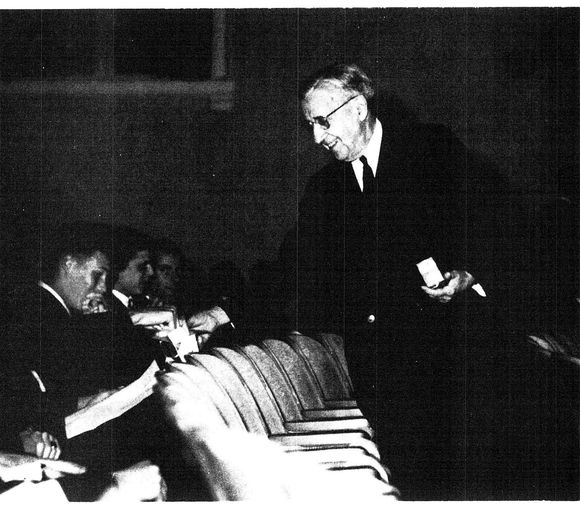Irons in the Fire
The Ransom of Russian Art
Assembling California
Looking for a Ship
The Control of Nature
Rising from the Plains
Table of Contents
La Place de la Concorde Suisse
In Suspect Terrain
Basin and Range
Giving Good Weight
Coming into the Country
The Survival of the Bark Canoe
Pieces of the Frame
The Curve of Binding Energy
The Deltoid Pumpkin Seed
Encounters with the Archdruid
The Crofter and the Laird
Levels of the Game
A Roomful of Hovings
The Pine Barrens
Oranges
The Headmaster
A Sense of Where You Are
The John McPhee Reader
The Second John McPhee Reader
Deerfield, Massachusetts, in 1902, was essentially one street a mile from the north to the south endunder shade so deep that even in the middle of the day the braided tracery of wagon ruts became lost in shadow a hundred yards from an observer. Photo credit: Deerfield Academy
It would be difficult to imagine a more beautiful setting for a school or a more attractive school in the setting. This is the center of the Deerfield campus, as it is today. Photo credit: Gottscho-Schleisner, Inc.
When Frank L. Boyden first saw Deerfield Academy, this is what he sawa dispiriting red brick building that appeared to have been designed to exclude as much sunlight as possible, and a student body of fourteen boys and girls. Photo credit: Deerfield Academy
The 1911 Deerfield baseball team. Upper right: Frank L. Boyden, headmaster, coach, first baseman. Third from left, front row: Captain Tom Ashley. Photo credit: Deerfield Academy
He believed in wearing the boys out. They dug ditches; they also made beehives, incubators, and wheelbarrows; and, with axes and crosscut saws, they cut lumber for lockers for their athletic equipment. The boy at the far right of the photograph is Tom Ashley. Photo credit: Deerfield Academy
Tom Ashley. Photo credit: Deerfield Academy
In his early years in Deerfield, the headmaster frequently went out into the fields of the surrounding Pocumtuck Valley in a borrowed horse and buggy and talked to young farm boys until he had persuaded them to go to school. This picture was taken in 1953. The fields are much the same, but the boys could be from Michigan, Maine, or Wyoming. Photo credit: Robert Bliss
At the age of twenty-two, the new headmaster looked forbidding but hardly forceful. Photo credit: Deerfield Academy
At the age of four, when he was a member of what he has described as a tough Sunday school class, he had a kind of reinforced gravity in his eyes which suggested that if this little boy were to clap his hands everyone within earshot would fall silent.
The headmasters father, Benjamin Franklin Boyden, has been remembered as a bit of a Micawber with a gift for words. Photo credit: Deerfield Academy
My mother was quiet, and a very good Sunday school teacher. She was a gracious and devout religious person. Photo credit: Deerfield Academy
Two men who gave the headmaster aid and encouragement when he was in particular need of aid and encouragement were Lewis Perry (right), headmaster of Exeter, and John Winant (standing), who was Governor of New Hampshire in the late nineteen-twenties and early nineteen-thirties and Ambassador to the Court of St. Jamess during the Second World War. This picture was taken in the nineteentwenties. Photo credit: Deerfield Academy
In his first year at Deerfield, he set up a card table beside a radiator just inside the front door of the school building. This was his office, not because there was no room for a headmasters office anywhere else but because he wanted nothing to go on in the school without his being in the middle of it. Years later, when the present main school building was built, the headmaster had the architect design a wide place in the first-floor central hallwaythe spot with the heaviest traffic in the schooland that was where his desk was put and where it still is. Photo credit: Hanson Carroll
He has a remarkable eye for trouble. If the mood of the student body at large is poor, he will sense it, and when one boy is disturbed, he will see it in the boys face, and he will think of some minor matter they need to talk over, so that he can find out what the difficulty is and try to do something about it. Photo credit: Hanson Carroll
Photo credit: Hanson Carroll
Photo credit: Hanson Carroll
You must have your boys together as a unit at least once a day, just as you have your family together once a day. Photo credit: Hanson Carroll
Animal crackers. Photo credit: Deerfield Academy
For about sixty years, students at Deerfield have referred to the headmaster as the Quid, a name that evolved in an era when Deerfield boys chewed tobacco. If the headmaster approached when they were chewing, whoever saw him first would say quid to the others, and everyone would attempt to hide his quid. In more recent times, the headmasters long black limousine has frequently been referred to as the Quidillac. Photo credit: E. C. Brandow

















